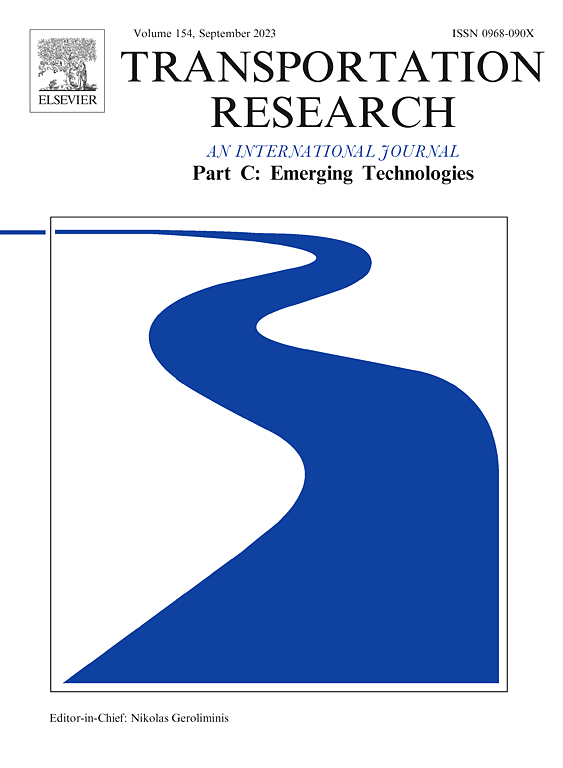TMS-GNN: Traffic-aware Multistep Graph Neural Network for bus passenger flow prediction
IF 7.6
1区 工程技术
Q1 TRANSPORTATION SCIENCE & TECHNOLOGY
Transportation Research Part C-Emerging Technologies
Pub Date : 2025-03-24
DOI:10.1016/j.trc.2025.105107
引用次数: 0
Abstract
Bus network plays a critical role in urban transportation affecting the use of private vehicles, traffic congestion, and urban accessibility. The accurate prediction of bus passenger flow is key to improving transit passenger experience and increasing the efficiency of bus network operations. In line with recent advances in deep learning for passenger flow prediction, graph neural networks (GNNs) have become increasingly popular due to their ability to account for the network structure between stops. Existing GNN-based models for bus passenger flow prediction, however, face several limitations. First, they do not take into account some distinctive characteristics of bus networks, such as their coexistence with vehicular traffic and their high sensitivity to urban traffic conditions. Moreover, sequence prediction models that have been widely applied to multistep passenger flow prediction suffer from a critical issue, called “exposure bias.” This results in the propagation and accumulation of errors through prediction steps while making predictions for farther time horizons. To address these issues, this study presents the Traffic-Aware multistep Graph Neural Network (TMS-GNN) model with Scheduled Sampling, a graph-based deep-learning framework designed to forecast multistep bus passenger flows at individual stops across a bus network. The model takes into account factors such as bus stop connectivity, urban traffic impacts, and multi-dimensional temporal patterns; and addresses exposure bias by employing a curriculum learning strategy called Scheduled Sampling. The comparison between the proposed model and other popular baseline models on two real-world networks with different geographical and urban patterns in Canada and USA shows that TMS-GNN outperforms the baselines in both the overall network-wide task, as well as multistep prediction. Also, to verify the contribution of the proposed components of the model, an ablation study is conducted. The results of the ablation study validate the design choices as well.
求助全文
约1分钟内获得全文
求助全文
来源期刊
CiteScore
15.80
自引率
12.00%
发文量
332
审稿时长
64 days
期刊介绍:
Transportation Research: Part C (TR_C) is dedicated to showcasing high-quality, scholarly research that delves into the development, applications, and implications of transportation systems and emerging technologies. Our focus lies not solely on individual technologies, but rather on their broader implications for the planning, design, operation, control, maintenance, and rehabilitation of transportation systems, services, and components. In essence, the intellectual core of the journal revolves around the transportation aspect rather than the technology itself. We actively encourage the integration of quantitative methods from diverse fields such as operations research, control systems, complex networks, computer science, and artificial intelligence. Join us in exploring the intersection of transportation systems and emerging technologies to drive innovation and progress in the field.

 求助内容:
求助内容: 应助结果提醒方式:
应助结果提醒方式:


